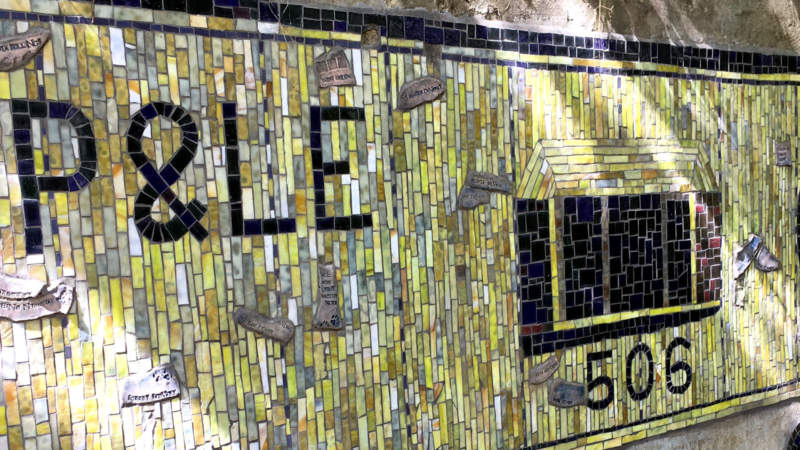History
The Pittsburgh & Lake Erie Railroad was formed in 1875 to transport coal, coke, iron ore, limestone, and steel among the region’s industrial centers. Its original line ran northwest to Youngstown, Ohio, and eventual branches — leased from smaller railroads — ran southeast along the Monongahela River through Homestead and McKeesport, and along the Youghiogheny River to Connellsville, where it met the Western Maryland Railway. The railroad was known as the ”Little Giant” since the heavy tonnage that it moved was out of proportion to its modest route mileage. By 1887, it became a subsidiary of the dominant New York Central Railroad, which improved its tracks and added capacity for passenger service.
Headquartered on Pittsburgh’s South Side and anchored by a magnificent seven-story station at the base of the Smithfield Street Bridge, the Pittsburgh & Lake Erie Railroad ran dozens of passenger trains daily to Youngstown between 1910 and 1941, allowing travelers access to Chicago, New York, Buffalo, and Boston via the New York Central Railroad. By 1970, however, with passenger service declining nationwide, it was down to one commuter line only.
In 1976, the Pittsburgh & Lake Erie Railroad regained its independence, although at a time with the region’s industrial might was fading and the coal mines near Connellsville were long tapped. It was eventually purchased by CSX, with some assets being absorbed, the commuter route terminated in 1985, and tracks from McKeesport to Connellsville abandoned in 1993 to make way for the Great Allegheny Passage.
Visitor Information
Today, the former Pittsburgh & Lake Erie Railroad station and freight buildings on Pittsburgh’s South Side house restaurants, hotels, and the Station Square retail complex. Travelers can observe the original white mile markers (adorned with the railroad’s interlocking P&LE logo) along the Great Allegheny Passage from McKeesport to Connellsville. In Boston, Pennsylvania, a preserved Pittsburgh & Lake Erie Railroad boxcar sits next to the GAP, and a restored passenger car is on exhibit next to the West Newton Visitor Center in West Newton.

